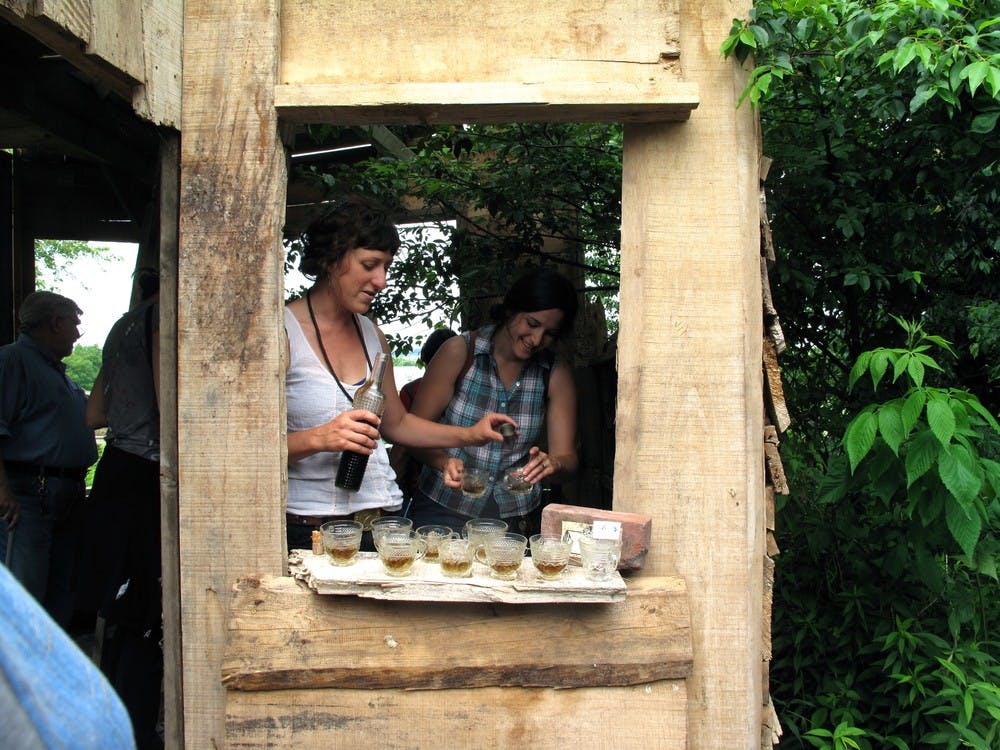While 4/20 has come and gone, Street is not done celebrating plant life; Saturday is Earth Day, and GreenFest will be here at Penn! As spring weather allows greenery to grow up through the cracks on Walnut Street, the less celebrated plants around campus have inspired more than impromptu Wawa runs––they are the basis of Philadelphia’s Eco–Art movement.

In 2013, Penn Fine Arts grad student and artist Kaitlin Pomerantz teamed up with botanist Zya Levy to create their ongoing project called WE THE WEEDS. The project started when Kaitlin noticed that people tend to step on lowly weeds as they rush around the city and uproot them from from neighborhood vegetable gardens without a second glance. She wondered if these overlooked plants had stories and wanted to bring an awareness to Philly’s natural landscape. At the time, she was working at Second State Press, a community printing studio, and had an idea to create labels that would identify unknown weeds growing naturally on the sides of the roads. With Zya’s help, she began to screen print labels "like a sort of guerilla curating project." As part of the venture, Kaitlin and Zya organized Weed Walks (no, not that kind of walk) so that residents of Philly could notice and appreciate the beauty that covers the city even in its grungy parking lots and otherwise abandoned alleyways.
Kaitlin and Zya became fascinated by the histories of how common plants have been used. For example, says Kaitlin, "Pokeweed, which we see everywhere in the fall with its big burgundy berry drops, was the plant used to make ink to sign the Declaration of Independence." They also explore medicinal and edible properties of weeds (no, not that kind of edible). A common type of wormwood called Mugwort, when placed in tea, is considered one of the best cures for malaria. “And it’s right on our Schuylkill banks,” Kaitlin gleams. Wormwood also has properties used in absinthe. One of Kaitlin and Zya’s public engagement art projects involves mixing a shot of vodka, club soda and a dash of wormwood and serving it during cocktail hour.

The artist/botanist duo were invited to create public installations and murals around the city. Last year, the two participated in the LandLab Residency program at the Schuylkill Center for Environmental Education, where they used a loom to weave invasive species of vines (Mile-a-Minute, Oriental Bittersweet, Kudzu, and Japanese Stilt Grass). Although organizations like this has supported the role of artists in the "fight against blight" in Philadelphia, urban progress makes Kaitlin and Zya's task difficult. "Developers (including those catering to Penn and Drexel students) are gobbling land," Kaitlin points out. "In some ways, our 'studio' is disappearing. Walking into a park that looks straight out of a CAD program, where the plants have been plopped down by gardeners and landscapers–this is not really an ideal place to marvel at the wonders of nature's ability to thrive in adverse environments."
WE THE WEEDS fuses the languages of both art and science. It challenges our perception of vacancy–is space really vacant? "No," says Kaitlin, "there are ecosystems within these spaces. Many of the plants that we denigrate as weeds are actually phytoremediators and are removing lead and other toxins from our soil, just by existing."
This weekend, while you ponder these ideas over a foraged cocktail, don’t forget to appreciate the urban jungle around you and have a happy Earth Day.
(photos from http://www.kaitlinpomerantz.com)

